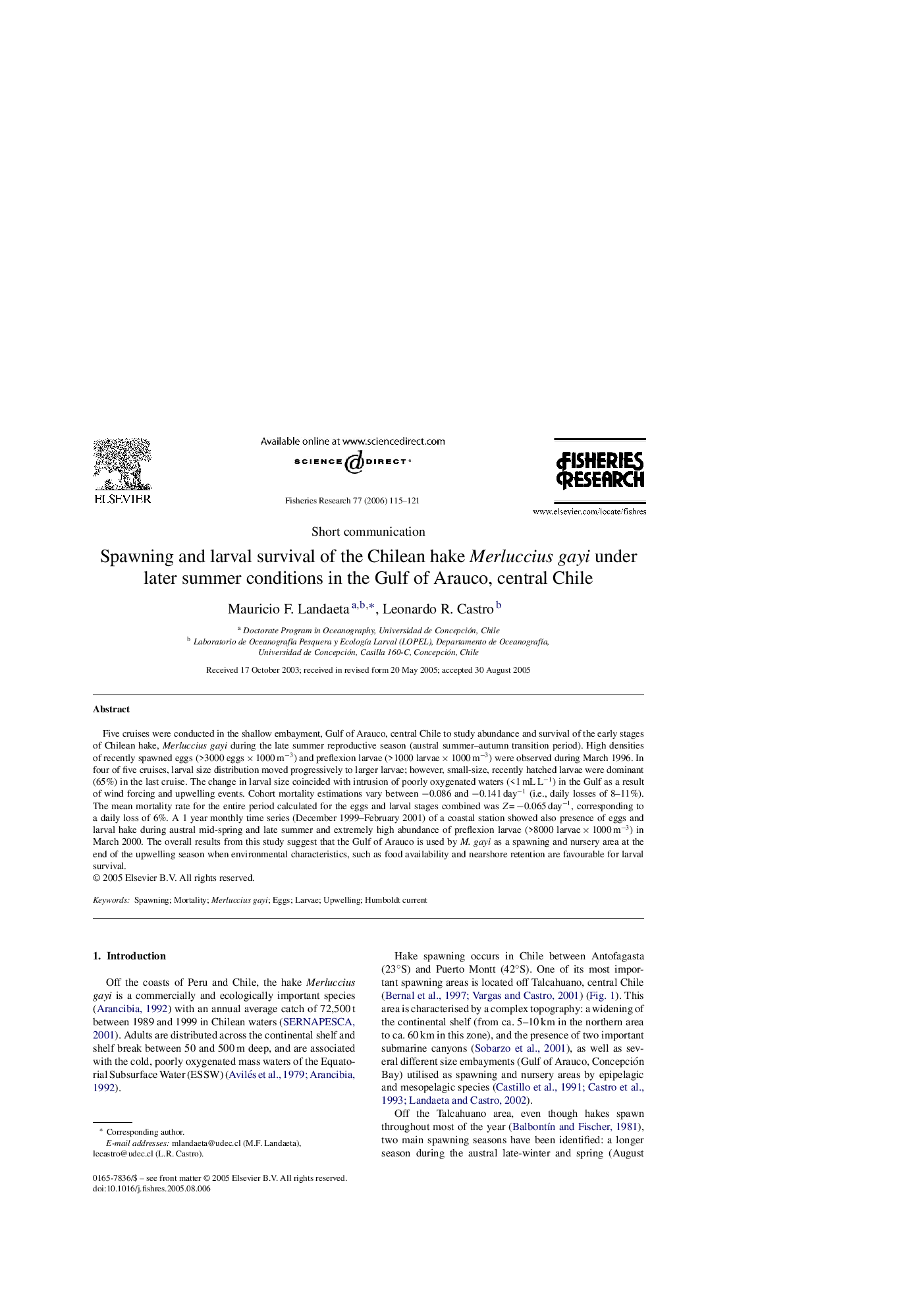| Article ID | Journal | Published Year | Pages | File Type |
|---|---|---|---|---|
| 4545092 | Fisheries Research | 2006 | 7 Pages |
Abstract
Five cruises were conducted in the shallow embayment, Gulf of Arauco, central Chile to study abundance and survival of the early stages of Chilean hake, Merluccius gayi during the late summer reproductive season (austral summer-autumn transition period). High densities of recently spawned eggs (>3000 eggs Ã 1000 mâ3) and preflexion larvae (>1000 larvae Ã 1000 mâ3) were observed during March 1996. In four of five cruises, larval size distribution moved progressively to larger larvae; however, small-size, recently hatched larvae were dominant (65%) in the last cruise. The change in larval size coincided with intrusion of poorly oxygenated waters (<1 mL Lâ1) in the Gulf as a result of wind forcing and upwelling events. Cohort mortality estimations vary between â0.086 and â0.141 dayâ1 (i.e., daily losses of 8-11%). The mean mortality rate for the entire period calculated for the eggs and larval stages combined was Z = â0.065 dayâ1, corresponding to a daily loss of 6%. A 1 year monthly time series (December 1999-February 2001) of a coastal station showed also presence of eggs and larval hake during austral mid-spring and late summer and extremely high abundance of preflexion larvae (>8000 larvae Ã 1000 mâ3) in March 2000. The overall results from this study suggest that the Gulf of Arauco is used by M. gayi as a spawning and nursery area at the end of the upwelling season when environmental characteristics, such as food availability and nearshore retention are favourable for larval survival.
Related Topics
Life Sciences
Agricultural and Biological Sciences
Aquatic Science
Authors
Mauricio F. Landaeta, Leonardo R. Castro,
